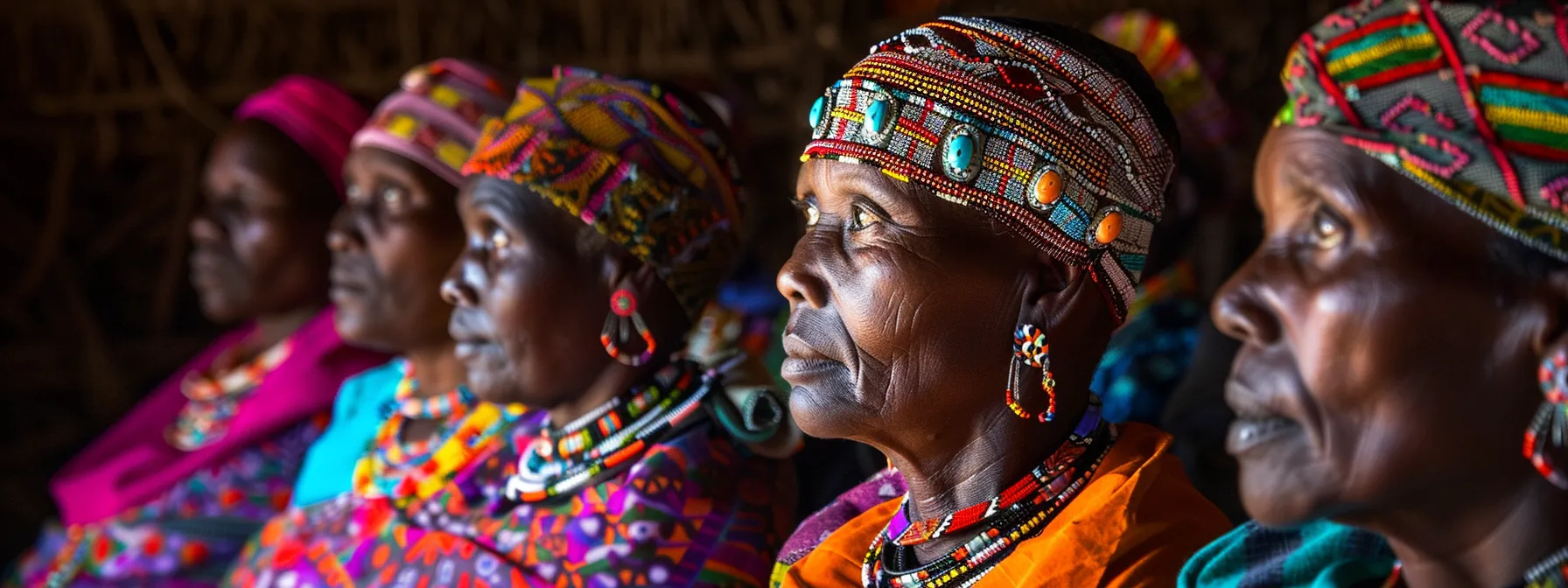Gemstones Therapy
Uncovering the Roots of African Gemstone Jewelry
Uncovering the Roots of African Gemstone Jewelry
Discover the captivating world of African gemstone jewelry, where vibrant colors and deep cultural significance intertwine. Imagine your future adorned with real gemstone bracelets, each telling a unique story rooted in its origin. Among these treasures, carnelian stands out, reflecting the rich heritage of gemfields across the continent, alongside other remarkable stones that shape its legacy. As you delve deeper, you’ll uncover the fascinating tales behind these gemstones, their cultural importance, and the sustainable practices that guide their mining. Keep reading to reveal how you can identify and appreciate authentic African gemstone jewelry while connecting with its profound history.
Key Takeaways
- African gemstones are deeply intertwined with cultural identity and historical significance
- Ethical sourcing is essential for improving local communities and promoting sustainable practices
- Traditional mining techniques still influence modern artisanal craftsmanship in jewelry design
- Gemstones serve as symbols of blessings, protection, and status in various African cultures
- Understanding authentic gemstones involves recognizing their unique characteristics and craftsmanship
Tracing the Origins of Gemstones in African Jewelry

Understanding the roots of real gemstone bracelets in African jewelry reveals a rich tapestry of history and cultural expression. Gemstones like agate have played a significant role throughout the continent, symbolizing wealth and status, while also serving practical purposes in trade and craftsmanship. Key regions, particularly in North Africa, have unearthed remarkable discoveries, showcasing both ancient and contemporary techniques. The innovative mining practices that originated in the Neolithic era continue to influence modern artisanal methods, connecting past and present. Moreover, gemstones aren’t just ornamental; they convey powerful meanings within various cultures, acting as markers of identity and tradition. The cabochon cut, a favored style in many African designs, exemplifies this blend of artistry and cultural significance.
The Historical Significance of Gemstones Across Africa
Throughout history, gemstones have held profound importance in African cultures, often seen in intricate jewellery designs that reflect both aesthetic appeal and status. In ancient Egypt, jewels adorned the necks of nobility, with pieces such as real gemstone bracelets highlighting the allure of diamond color and the craftsmanship involved in creating multi-faceted shapes. These gems were not merely decorative; they embodied wealth, power, and the deep spiritual connections that ancient societies fostered with the earth’s treasures. imagine your future
Key Regions and Their Gemstone Discoveries
Key regions across Africa have unveiled significant gemstone discoveries that bridge ancient practices with contemporary artistry. The Blombos Cave, a notable archaeological site, has revealed evidence of early stone carving techniques tied to the Stone Age, showing how gemstones like aquamarine were utilized not just for adornment but also as symbols of wealth and prestige within tribal communities.
Another region, known for its rich geological variety, has provided ample sources of gemstones, fostering a culture that celebrates skilled craftsmanship. The traditions established by ancient artisans continue to inspire modern creators, showcasing the enduring relationship between gemstones and the expression of societal identity throughout Africa.
Ancient Mining Techniques and Their Modern Legacy
Ancient mining techniques in Africa laid the foundation for the rich artistic expressions seen in modern gemstone jewelry, where craftsmanship endures through generations. The extraction methods employed by early miners have evolved but still inspire contemporary artisans who work with stones like rhodolite and tsavorite, melding traditional practices with innovative designs. Today, alongside techniques like sculpting and integrating vitreous enamel with gemstones such as lapis lazuli, jewelers continue to honor the legacies of their ancestors while adapting to contemporary tastes:
- Origins of gemstone mining in Africa date back to ancient societies.
- Innovative extraction methods influenced modern craftsmanship.
- Traditional techniques remain relevant in contemporary jewelry design.
- Modern artisans blend ancient practices with new materials and styles.
Gemstones as Symbols in African Cultures
In African cultures, gemstones serve as profound symbols that encapsulate identity, tradition, and societal values. Countries like Mozambique are renowned for their rich deposits of gemstones, which not only contribute to local economies but also signify cultural heritage. For instance, the crystal structure of gemstones, such as the highly prized Golconda diamonds, is often associated with purity and strength, mirroring the intricate patterns found in traditional textile designs that reflect the unique artistry of various ethnic groups.
As you uncover the fascinating journey of gemstones in African jewelry, you begin to sense their deeper significance within communities. The vibrant hues and intricate designs not only dazzle the eye but also embody rich traditions and cultural narratives that demand exploration.
The Cultural Importance of Gemstone Jewelry in Africa

The significance of gemstone jewelry in Africa extends far beyond mere aesthetics, deeply entwined with traditional rituals and ceremonies that honor cultural heritage. You’ll find that gemstones such as topaz and other minerals are often integral to community celebrations and rites of passage, serving as symbols of blessings and prosperity. The role of these gemstones goes beyond their visual appeal; they signify tribal identity and serve as tangible links to ancestral lineage. In regions like East Africa, local goldsmiths skillfully combine metalworking with gemstone crafting techniques, preserving the artistry passed down through generations. This fusion not only highlights the intricate craftsmanship involved but also reinforces cultural narratives, ensuring that the essence of African identity resonates through each piece of jewelry.
Gemstones in Traditional African Rituals and Ceremonies
In traditional African rituals and ceremonies, gemstones like spinel and chalcedony play a vital role, symbolizing blessings and protection for individuals within the community. Just as gems were valued in ancient Rome for their beauty and significance, today, unique pieces such as neck rings adorned with these stones are cherished during significant life events and celebrations. Auctions featuring handcrafted jewelry underscore the enduring importance of these materials in connecting generations and highlighting cultural heritage:
The Role of Gemstones in Tribal Identity and Heritage
In West Africa, gemstones play a vital role in expressing tribal identity and cultural heritage. Each stone carries significance, often linked to the community’s history, much like jewelry often seen during the time of the Roman Empire. Silver and carbon-based stones, for example, are not just adornments but are woven into the very fabric of tribal narratives and rituals.
These gems symbolize lineage, wealth, and social status, akin to the creations of luxury jewelers like Harry Winston, where each piece tells a story far deeper than its aesthetic value. During significant events, communities honor these gemstones as links to their ancestors, reinforcing traditions and celebrating collective identity:
- Recognizing gems as symbols of tribal lineage.
- Using gemstones in ceremonial adornment reflecting social status.
- Celebrating heritage through the intricate stories embedded in gemstone jewelry.
Preservation of Gemstone Crafting Techniques
Preservation of gemstone crafting techniques in Africa is pivotal in maintaining cultural heritage. Through archaeology, researchers uncover ancient methods like hardstone carving, which artisans have refined over generations. By exploring the artistry behind pieces such as ruby brooches or quill designs, you can appreciate the craftsmanship that connects modern jewelers to their ancestors.
Gemstones hold deep cultural significance across Africa, each piece telling a story rooted in tradition and heritage. Now, let’s explore some of the most celebrated African gemstones and the captivating tales behind them.
Famous African Gemstones and Their Stories

As you delve into the captivating stories of famous African gemstones, you will encounter the Tanzanite enigma, renowned for its striking Maasai blue hue and swift rise to global acclaim. This gem, coveted for its vibrancy, has become a symbol of Tanzania’s natural wealth. You will also discover the African ruby, often referred to as the heart of Mozambique, where this dazzling stone has not only fueled local economies but also drawn international attention for its brilliance. Additionally, the green beryl from Namibia stands out with its crystal clarity and allure, enriching the narrative of gemstones that have made their mark far beyond the African continent, capturing interests even in the Middle East. Each of these gemstones carries unique cultural significance and history, offering insight into the complex relationship between Africa and its natural treasures, much like the exhibits you might find at the Smithsonian Institution that celebrate the artistry of gemsmithing and craftsmanship.
The Tanzanite Enigma: From Maasai Blue to Global Fame
The Tanzanite enigma captivates with its stunning Maasai blue hue, originating from a single source in Tanzania, near the Zambezi River. Unlike traditional gemstones that boast diamond clarity, Tanzanite possesses a unique vibrancy that sets it apart, often compared to the rare beauty of jasper. As you explore its journey, consider how the mineral blends and alloys from meteorite impacts have contributed to its distinctive color, positioning Tanzanite among the world’s most coveted stones.
African Ruby: The Heart of Mozambique
The African ruby, often regarded as the heart of Mozambique, captivates with its vibrant beauty and unmatched fineness. When you encounter a pendant featuring this stunning gemstone set in sterling silver, you immediately feel the rich cultural heritage it represents. Often paired with malachite accents, these pieces not only enhance aesthetic appeal but also symbolize the deep connection between the artisans and the land from which these precious stones originate.
The Green Beryl of Namibia
The Green Beryl of Namibia is revered not only for its stunning clarity and vivid hues but also for the rich narratives it carries. This gemstone, often compared to the lustrous turquoise favored in Ancient Greece, has become a sought-after piece in modern jewelry, exemplifying elegance and sophistication. Jewelers frequently enhance its beauty with settings made from precious metal, showcasing stones that often weigh over a carat, blending tradition with contemporary craft, reminiscent of iconic gems like the Hope Diamond.
African gemstones have inspired generations with their rich heritage and captivating tales. Today, contemporary designers are breathing new life into these traditions, merging age-old craftsmanship with innovative flair.
Modern Influences on African Gemstone Jewelry Design

As you explore the landscape of African gemstone jewelry, you’ll find a vibrant intersection of traditional craftsmanship and contemporary design. Innovative designers are reinterpreting age-old techniques to create pieces that resonate with both heritage and modern flair. The fusion of traditional and modern elements often showcases unique materials, such as copper and other metals, while also reflecting diverse influences, including the elegance of art nouveau. This blend is evident in stunning earrings that feature exquisite African gemstones, which are gaining recognition in the global fashion industry. Much like the intricate designs of the Aztecs, the contemporary pieces draw on rich cultural narratives, bridging the past and the present seamlessly.
Contemporary Designers and Their Interpretation of Tradition
Contemporary designers are reimagining African gemstone jewelry, incorporating both modern aesthetics and traditional craftsmanship. By blending vibrant cultures with innovative materials like bronze and carbonado, these artisans highlight the rich heritage associated with gemstones such as pyrope, which resonates with the significance of local birthstones. Their work not only celebrates ancient techniques but also ensures that the stories behind these gems continue to inspire future generations:
- Designers fuse modern elements with traditional techniques.
- Artistry revolves around cultural narratives and stories.
- Use of innovative materials enhances the beauty of gemstones.
- Contemporary interpretations celebrate local identity and heritage.
The Fusion of Traditional and Modern Elements in Jewelry
The fusion of traditional and modern elements in African gemstone jewelry creates pieces that tell diverse stories while embracing historical significance. Artisans skillfully combine diamonds and emeralds with innovative materials like zircon and iron to produce striking designs that attract global attention. Often, these stunning creations feature evocative colors, such as the captivating blue diamond, reflecting the influence of various cultures, including Arabs, enriching the narrative behind each item.
Consider the following table that illustrates the integration of different elements in African gemstone jewelry:
African Gemstones in the Global Fashion Industry
As you observe the current trends in the global fashion industry, you’ll notice a remarkable influence of African gemstones in contemporary jewelry design. Artisans skillfully incorporate traditional elements like beadwork and bangles alongside vibrant materials, often influenced by cultural patterns found in wax prints. Notably, techniques such as heat treating enhance the visual appeal of these gemstones, while the delicate balance of ivory accents can elevate the overall aesthetic, creating pieces that resonate deeply with both local heritage and global audiences.
The vibrant evolution of jewelry design reflects the dynamic cultural tapestry of Africa, sparking interest in the origins of these stunning stones. This connection leads us to a critical conversation about sustainable practices in gemstone mining, where the beauty of the land meets ethical stewardship.
Sustainable Practices in African Gemstone Mining

Understanding sustainable practices in African gemstone mining reveals the vital connection between ethical sourcing and the well-being of local communities. You’ll appreciate how fair trade initiatives not only benefit artisanal miners but also uplift entire regions, fostering economic growth and promoting development. This journey through the historical context, from the middle ages to modern times, unfolds the intricate relationship between miners and the gemstones they extract, often used in creations ranging from exquisite neck jewelry to art deco designs. The teachings of figures like Pliny the Elder remind us of gemstones’ roles as powerful amulets throughout history. Yet, contemporary mining faces challenges that require innovative solutions to ensure that these treasured resources are handled responsibly and sustainably.
Ethical Sourcing and Its Importance to Local Communities
Ethical sourcing is crucial for the sustainability of African gemstone mining, as it directly impacts local communities. By prioritizing fair trade principles, miners gain access to better working conditions and fair wages, fostering economic growth. Institutions like the Metropolitan Museum of Art and the American Museum of Natural History emphasize the importance of responsibly sourced gems such as opal, peridot, and aventurine in showcasing cultural heritage and community stories.
- Fair trade initiatives empower local miners.
- Communities benefit from better economic opportunities.
- Respect for cultural heritage enhances the storytelling of gemstones.
The Impact of Fair Trade Initiatives on Artisanal Miners
Fair trade initiatives significantly transform the lives of artisanal miners across Africa, providing them with fair wages and safer working conditions. This empowerment allows miners to pursue their craft, including lapidary skills that enhance the beauty of gemstones like chrysoberyl and jade. By ensuring ethical practices, these initiatives promote community health and sustainability, creating a ripple effect that benefits families and local economies in the long run:
- Empowerment of artisanal miners through fair wages.
- Improvement of safety and working conditions.
- Promotion of sustainable practices in gemstone mining.
- Enhanced focus on community health and family welfare.
Challenges and Solutions in Contemporary African Gemstone Mining
Contemporary African gemstone mining faces challenges that resonate with the complexities of various civilizations, echoing difficulties once encountered during the Byzantine Empire. Issues such as illegal mining and environmental degradation disrupt the intricate relationship between tribes and their cultural heritage tied to gemology. Innovative solutions are essential to implement sustainable practices that protect these communities while promoting responsible extraction methods and preserving the beauty of nacre, often found in lesser-known gemstones.
- Illegal mining threatens community security and cultural connections.
- Environmental impacts challenge the sustainability of gemstone resources.
- Implementing responsible extraction methods benefits both communities and ecosystems.
- Education on gemology fosters appreciation and value for ethically sourced gemstones.
Discover how to spot the unique qualities that set authentic African gemstone jewelry apart from the rest. Learn to appreciate not only their beauty but also the stories they carry from the heart of Africa.
How to Identify and Appreciate Authentic African Gemstone Jewelry

Identifying and appreciating authentic African gemstone jewelry requires a keen eye for detail and an understanding of its unique characteristics. Pay attention to stones like onyx and garnet, which often feature distinctive inclusions that can tell you about their origin and authenticity. In bustling hubs like New York City, where the market for gemstones thrives, you can elevate your knowledge by exploring various pieces and comparing their qualities. Additionally, consider the craftsmanship involved, recognizing that even the clay settings can carry cultural significance and enhance a piece’s value. By honing your ability to discern these factors, you engage more deeply with the art and heritage of African gemstones, ensuring that your collection reflects not just beauty, but also authenticity.
Understanding the Characteristics of African Gemstones
When examining African gemstones, look closely at unique characteristics that define their authenticity. For example, sodalite from Mali often displays a deep blue hue, with a distinctive mottled pattern, while quartz stones from the Ivory Coast may showcase varying degrees of transparency and color saturation. Additionally, the craftsmanship of pieces like cameo brooches, which depict intricate scenes or figures, reveals the skilled artistry that complements the natural beauty of these stones, enriching your appreciation of African gemstone jewelry.
Tips for Identifying Authentic Pieces
To identify authentic African gemstone jewelry, particularly pieces showcasing tanzanite and tourmaline, immerse yourself in the nuances that define these gems. Visit institutions like the National Museum of Natural History, where you can enhance your knowledge of gemstones’ origins and characteristics, especially those associated with the Maasai people. Familiarizing yourself with unique color traits and inclusions not only helps in assessing authenticity but also deepens your appreciation for the cultural significance embedded in each piece.
The Value of Authenticity: Beyond the Gemstones
The essence of authenticity in African gemstone jewelry transcends the visual appeal of individual gemstones like amethyst or bead creations. By understanding these pieces’ origin, especially the mining practices that shape their narratives, you connect more deeply with their value. Familiarize yourself with the Mohs scale to assess the durability of these stones, ensuring your collection is not only beautiful but also resilient and significant.



